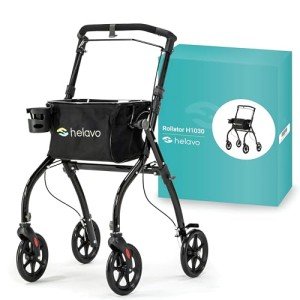Understanding Transport Walkers: A Comprehensive Guide
Transport walkers are essential mobility help created to improve the independence and safety of people, especially the elderly and those with mobility obstacles. Integrating the performance of a walker with the benefit of a seat, these devices permit users to keep their mobility while supplying a resting alternative whenever required. In this post, we explore the features, advantages, types, and upkeep of transport walkers, along with frequently asked concerns to gear up readers with important knowledge.
What is a Transport Walker?
Transport walkers are mobility devices geared up with wheels created for individuals with mobility difficulties. Unlike www.mymobilityscooters.uk , which need users to lift them a little to move, transport walkers include wheels that facilitate rolling. They normally include a seat, handlebars for stability, and a storage basket for personal products.
Key Features of Transport Walkers
- Wheeled Base: The rolling wheels permit easy movement, minimizing the pressure on the user.
- Foldable Design: Most transport walkers can be quickly folded for storage or transport.
- Comfortable Seating: A padded seat is normally included, offering users a place to rest.
- Hand Brakes: Designed for security, many walkers include hand brakes that permit users to control their speed and preserve stability.
- Storage Options: An integrated basket or pouch at the front permits users to carry individual items without the need for additional bags.
Advantages of Using Transport Walkers
Transport walkers use various advantages that cater to the needs of various users:
1. Increased Mobility
Transport walkers enable people to browse their spaces more freely. They are particularly useful for those recovering from surgery or handling chronic health issues.
2. Safety and Stability
With a tough frame and supportive handlebars, transport walkers offer stability, lessening the threat of falls and mishaps.
3. Resting Capability
The seating option uses users a chance to rest during extended trips, which is vital for those who may tire quickly.
4. Easy Maneuverability
Transport walkers are lightweight and developed for smooth motion, making them easy to utilize both inside and outdoors.
5. Self-reliance
By utilizing transport walkers, people can take part in activities without relying greatly on caretakers, hence boosting their self-reliance and quality of life.
Types of Transport Walkers
When considering a transport walker, it's essential to recognize the different types offered:
| Type | Description |
|---|---|
| Standard Transport Walker | Basic model with four wheels and a seat. |
| Transport Wheelchair | Integrates the functions of a walker and a wheelchair. Can be pressed by a caregiver. |
| Heavy-Duty Transport Walker | Designed for bigger users, offering extra stability and weight capacity. |
| Two-Wheel Walker | Features two wheels at the front and 2 back legs, enabling much better balance. |
| Reclining Walker | Provides adjustable seating for comfort, targeting users with unique requirements. |
How to Choose the Right Transport Walker
Elements to Consider:
- User's Height: Ensure that the walker is adjustable to the user's height for ideal comfort and security.
- Weight Capacity: Check the walker's weight limitation to ensure it can accommodate the user.
- Intended Use: Determine if the walker will be utilized primarily inside, outdoors, or both.
- Storage Features: Evaluate the convenience of storage choices offered with the walker.
- Portability: If regular transport of the walker is needed, consider its weight and how easily it can be folded.
Maintenance Tips for Transport Walkers
To lengthen the life and effectiveness of a transport walker, follow these maintenance suggestions:
- Regular Cleaning: Wipe down the frame and seat with a damp cloth to get rid of dirt and stains.
- Examine the Wheels: Ensure the wheels are rolling smoothly; lubricate if required.
- Check Brakes: Regularly check that hand brakes work appropriately for included security.
- Tighten Bolts and Screws: Periodically check and tighten any loose components.
- Change Parts As Needed: If wheels or footrests reveal indications of wear, consider changing them for optimum safety.
Frequently Asked Questions (FAQs)
1. Who can benefit from a transport walker?
Transport walkers are perfect for older adults, people recuperating from surgical treatments, and those with conditions such as arthritis, stroke, or balance issues.
2. Are transport walkers ideal for outdoor use?
Yes, many transport walkers are developed with durable products and wheels that can manage outdoor surface, although it's best to inspect producer requirements.
3. How much weight can a transport walker normally deal with?
Many transport walkers have weight capacities varying from 250 to 400 pounds, depending upon the brand and model.
4. Do I need a prescription to purchase a transport walker?
While a prescription is not usually required to purchase a transport walker, talking to a health care service provider can help in picking the ideal walker for particular requirements.
5. Can transport walkers be utilized by people with restricted upper body strength?
Yes, lots of models are created with features that provide stability and make them simpler to use for individuals with restricted upper body strength.
Transport walkers are important aids that promote independence, security, and mobility for individuals with mobility difficulties. By comprehending their features, advantages, and maintenance, users can choose the ideal walker to suit their way of life. Purchasing a transport walker can make a considerable distinction in enhancing one's quality of life, making daily activities more workable. Whether utilized for short errands or longer excursions, a transport walker provides the support and confidence needed to navigate the world.

